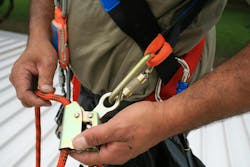Boost Your Bottom Line with Proper Fall Protection Systems
One of the fundamental truths about any business operation is the essential role of worker safety. Often overlooked, investment in safety equipment like fall protection systems is not merely a mandatory regulation. It's a strategic choice that drives economic efficiency, reduces potential legal issues, and boosts employee morale. Today, we'll explore the economics of safety and why investing in robust fall protection measures is a wise financial move.
The Direct Economic Impact of Safety Negligence
First, let's examine the immediate economic consequences of neglecting safety measures in a business:
OSHA Fines: Non-compliance with Occupational Safety and Health Administration (OSHA) standards can lead to substantial fines. These can range anywhere from a few thousand to hundreds of thousands of dollars, depending on the severity and recurrence of the violation. Moreover, these numbers only represent the direct costs.
Legal Costs: The potential for worker injuries, particularly from falls, exposes businesses to liability lawsuits. Legal costs, compensation payments, and potential punitive damages can run into millions, not to mention the damage to the company's reputation.
Increased Insurance Premiums: Following accidents or OSHA violations, businesses often face an increase in insurance premiums, which can add a considerable ongoing expense. This cost is often overlooked but can affect a company's bottom line over the long term.
The Indirect Costs of Ignoring Safety
Beyond the direct costs, ignoring safety can have hidden, indirect costs that may have a more profound long-term impact on your business.
Productivity Loss: Injured workers mean lost work hours, disruption in project schedules, and overtime costs for remaining workers to cover the gap. Over time, these losses can add up significantly.
Morale & Retention: Employee morale is directly linked to the workplace's perceived safety. Companies that under-invest in safety equipment often face higher turnover rates, leading to additional hiring and training expenses.
Loss of Business Opportunities: Particularly for businesses in industries where safety standards are critical, a poor safety record can disqualify you from lucrative contracts or partnerships, leading to missed business opportunities.
The Cost-Benefit Analysis of Investing in Fall Protection
Having seen the potential costs of ignoring safety, let's shift our focus to the other side of the coin, the substantial benefits and savings that an investment in fall protection can bring.
Prevention Is Cheaper Than Cure: The National Safety Council estimates that a medically consulted injury costs about $42,000. On the other hand, a comprehensive fall protection system installation by a professional is usually a fraction of this cost.
Reduced Downtime: With a robust fall protection system, businesses experience fewer interruptions due to accidents, leading to more consistent productivity. Maintained over time, this can translate into significant savings and higher output.
Improved Company Reputation: Employees, customers, and industry partners view businesses that prioritize safety more favorably. This reputation can result in tangible benefits like improved employee recruitment and customer loyalty.
Competitive Advantage: A strong safety record can offer a significant competitive advantage, especially when bidding for contracts. Many companies prioritize safety records when choosing their partners, making your investment in safety a potential gateway to new business opportunities.
Hunter Wynne is Educational Content Specialist for Diversified Fall Protection. Since 1994, Diversified Fall Protection has installed, inspected, and re-certified thousands of 3M/Capital Safety, MSA/Latchways, Honeywell/Miller, suspended maintenance anchorage, and rigid fall protection systems.
About the Author
Hunter Wynne
Hunter Wynne is Educational Content Specialist for Diversified Fall Protection. Since 1994, Diversified Fall Protection has installed, inspected, and re-certified thousands of 3M/Capital Safety, MSA/Latchways, Honeywell/Miller, suspended maintenance anchorage, and rigid fall protection systems.
